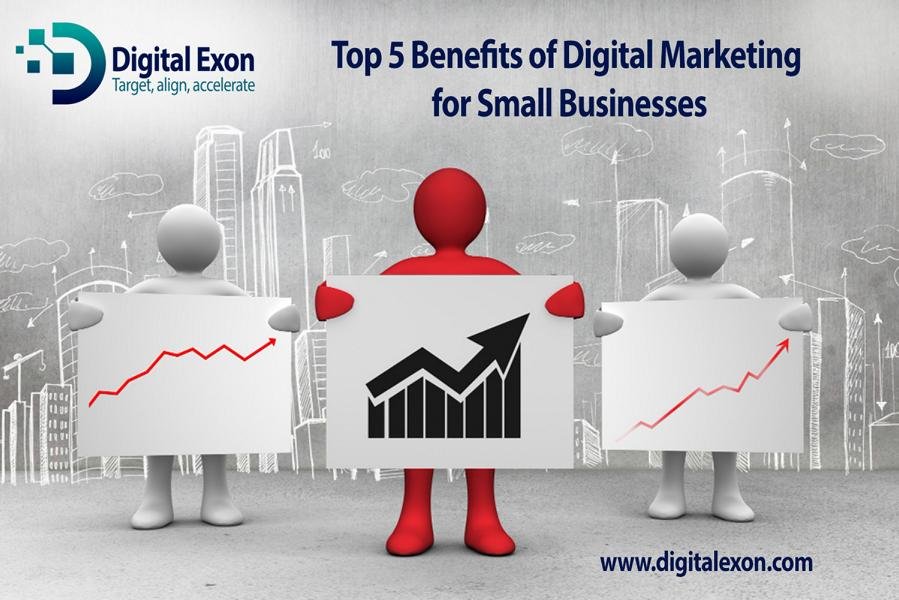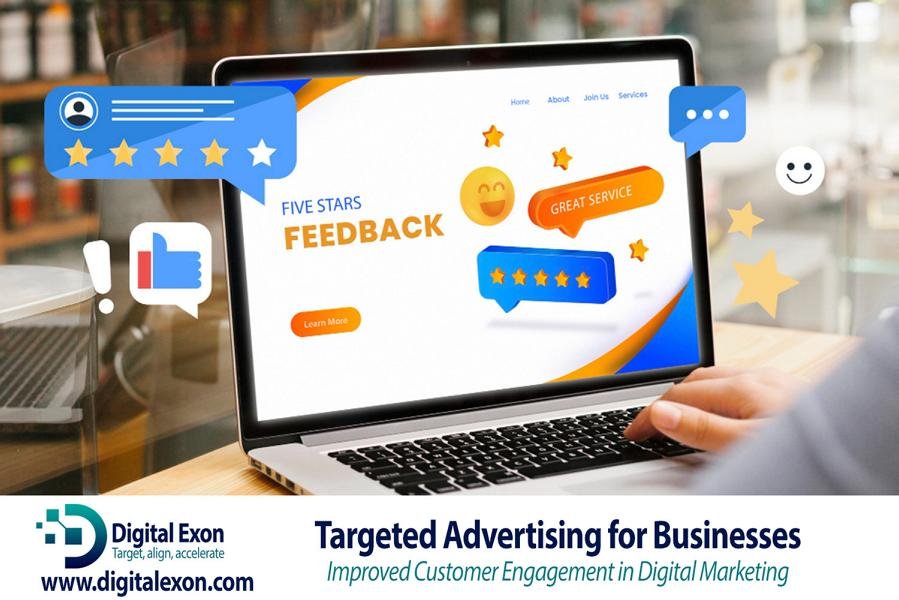Digital marketing is a tool by using we can promote our products and services. By using the Internet and IT services small businesses can reach a wider audience. This article will discuss the top 5 benefits of digital marketing for small businesses and how it can help them grow and succeed.
What is Digital Marketing
Digital marketing refers to utilizing social media, search engines, email, and websites to promote products and services. Small businesses can benefit significantly from digital marketing as it can help them compete with larger enterprises, reach a wider audience, and increase their revenue. Look at the top 5 benefits of digital marketing for small businesses.
#1. Increased Visibility and Reach
One of the most benefits of digital marketing is that it allows small businesses to increase their visibility and reach. With the help of search engine optimization (SEO) and social media marketing, companies can appear at the top of search engine results and reach a wider audience. By targeting specific keywords and demographics, companies can attract the right customers to their website and social media pages.

Importance of Increased Visibility and Reach
Increased visibility and reach are essential for businesses that want to attract their target audience and stand out. Here are some benefits of having increased visibility and reach:
- Increased Traffic: When your website and online content rank higher in SERPs, you can attract more organic traffic to your website. This traffic is more likely to convert into leads and customers, which can increase your revenue.
- Brand Awareness: More people seeing your website and online content can increase your brand awareness. This can lead to more people recognizing and trusting your brand, increasing your customer base.
- Competitive Edge: By having increased visibility and reach, you can stay ahead of your competitors and attract more customers to your business. It can help you achieve your business goals.
#2. Cost-Effective Digital Marketing Marketing
Digital marketing has become a very important marketing strategy. With the rise of online competition, companies must utilize digital marketing to attract their target audience and stand out. However, digital marketing can be expensive, and businesses with a limited budget may need help to invest in costly digital marketing strategies. This article will explore cost-effective digital marketing strategies companies can use to promote their products or services and reach their target audience.
Digital Marketing Strategies for Small Businesses
Small businesses often need more resources to invest in expensive digital marketing strategies. However, companies can use many cost-effective digital marketing strategies to promote their products or services and reach their target audience.

-
Social Media Marketing
Social media platforms like Twitter, and Facebook provides businesses with a cost-effective way to reach their target audience. Companies can post regular updates, share valuable content, and engage with followers by creating a social media account. Social media platforms also allow businesses to run targeted ads to reach a specific audience, making social media marketing a cost-effective way to promote your business.
-
Email Marketing
Email marketing is an easy way to reach your target audience and promote your products or services. By creating a targeted email list, businesses can send subscribers regular newsletters, promotions, and updates. Email marketing also allows companies to track their open rates, click-through rates, and conversion rates, making it easy to measure the effectiveness of your campaigns.
-
Search Engine Optimization (SEO)
Search engine optimization (SEO) is a cost-effective way to improve your website’s visibility and attract organic traffic. By optimizing your website’s content and structure for specific keywords and phrases, businesses can rank higher in search.
-
Content Marketing
Content marketing is a cost-effective way to attract and engage your target audience. By creating valuable and relevant content like blog posts, infographics, and videos, businesses can attract organic traffic to their site and build their brand reputation as a thought leader in their industry.
#3. Targeted Advertising
With the help of social media platforms such as Facebook and Instagram, businesses can create ads that target specific demographics such as age, gender, location, and interests. This means that companies can create personalized ads more likely to be seen by their target audience.

Targeted Advertising benefits
Targeted advertising is a form of digital advertising that uses data to display ads to a specific audience. Instead of showing ads to a broad audience, targeted advertising displays ads to individuals based on their demographics, interests, behavior, or other data points. This article will explore the benefits of targeted advertising for businesses.
Benefits of Targeted Advertising for Businesses
-
Increases ROI
One of the main benefits of targeted advertising is that it can increase your return on investment (ROI). This means that you are getting more value for your advertising spend.
-
Improves Ad Performance
Targeted advertising can also improve the performance of your ads. When you display ads to a specific audience, your ads are more relevant to that audience, which means they are more likely to engage with your ads. This can result in higher click-through rates, lower bounce rates, and more conversions.
-
Reduces Advertising Costs
Targeted advertising can also reduce your advertising costs. By displaying ads to a specific audience, you are not wasting advertising spend on individuals uninterested in your product or service. This means that you can allocate your advertising budget more effectively and get more value for your money.
-
Improves Customer Experience
Targeted advertising can also improve the customer experience. By displaying relevant ads to the individual, you are providing a more personalized experience. This can make the individual feel valued and increase their likelihood of engaging with your brand.
-
Provides Insights
Targeted advertising can also provide valuable insights into your target audience. By analyzing the data collected through targeted advertising, businesses can better understand their audience’s demographics, interests, behavior, and other data points. This information can improve your advertising campaigns and create more targeted marketing strategies.
#4. Improved Customer Engagement
Digital marketing also allows businesses to engage with their customers in new and meaningful ways. With the help of social media, companies can respond to customer inquiries, provide support, and create a sense of community.
Improved Customer Engagement in Digital Marketing
However, with the rise of online competition, companies must engage their customers effectively to stand out. This article will explore how businesses can improve customer engagement in digital marketing.

-
Personalization
Personalization is an effective way to improve customer engagement in digital marketing. By creating personalized content relevant to the individual, businesses can make a more customized customer experience. Personalization can be achieved by using data to create targeted ads, personalized emails, and customized landing pages.
-
Social Media Engagement
Social media platforms give businesses a powerful tool to engage with customers. By creating engaging social media content and responding to customer inquiries, companies can build relationships with their customers and improve customer engagement. Social media platforms also allow businesses to run social media campaigns that can increase brand awareness and customer engagement.
-
Interactive Content
Interactive content is a great way to engage customers in digital marketing. Interactive content includes quizzes, polls, surveys, and other interactive elements that encourage customers to engage with the content. Interactive content is entertaining and provides valuable insights into customer preferences and behavior.
-
Video Marketing
Video marketing is a highly engaging form of digital marketing. Businesses can improve customer engagement and build brand awareness by creating exciting videos that provide value to the customer. Video marketing can include product demos, customer testimonials, and explainer videos.
-
Gamification
Gamification is a strategy that involves turning a marketing campaign into a game. Businesses can engage customers and increase brand awareness by creating a contest related to the marketed product or service. Gamification can also provide valuable data about customer preferences and behavior.
#5. Better Data Collection and Analysis
Finally, digital marketing provides businesses with better data collection and analysis. With the help of tools such as Google Analytics, companies can track their website traffic, conversion rates, and user behavior. This allows businesses to make informed decisions about their marketing strategies and make changes as needed. By analyzing data, companies can also identify areas for improvement and optimize their campaigns for better results.

Better Data Collection and Analysis in Digital Marketing
-
Define Clear Objectives
The first step in improving data collection and analysis in digital marketing is to define clear objectives. By having clear objectives, businesses can identify the data they need to collect and analyze to achieve their goals. For example, companies may need to collect data on website visits, bounce rates, and referral sources if the goal is to increase website traffic.
-
Use Multiple Data Sources
Businesses need to use multiple data sources to gain a comprehensive view of customer behavior and preferences. Data sources include website analytics, social media insights, customer surveys, and sales data. By using multiple data sources, businesses can identify patterns and trends they may have yet to identify with a single data source.
-
Collect and Analyze Data in Real-Time
Real-time data collection and analysis allow businesses to respond quickly to customer behavior and preferences changes. Real-time data collection and analysis can be achieved using tools such as Google Analytics, social media monitoring tools, and marketing automation software.
-
Use Data Visualization Tools
Data visualization tools can help businesses make sense of large amounts of data. By presenting data visually, companies can identify patterns and trends more quickly and make data-driven decisions.
-
Continuously Evaluate and Refine Strategy
Digital marketing is an iterative process, and businesses need to continuously evaluate and refine their strategies based on the data they collect and analyze. By regularly assessing and refining their Strategy, companies can ensure that they meet their objectives and stay ahead of their competitors.
Conclusion
Digital marketing is the best tool for small businesses looking to grow and succeed. Companies can improve their marketing strategies and revenue by increasing their visibility and reach, targeting specific audiences, engaging with customers, and collecting data. As digital marketing continues to evolve, small businesses can stay ahead of the competition by embracing new technologies and strategies.
FAQs for Benefits of Digital Marketing for Small Businesses
Q: What is digital marketing, and how does it benefit small businesses?
A: Digital marketing uses digital channels such as social media, search engines, email, and websites to promote products or services. Digital marketing provides a cost-effective way to reach an audience.
Q: How can small businesses use social media for digital marketing?
A: Small businesses can use social media to engage with customers, build brand awareness, and promote their products or services.
Q: What are some common digital marketing strategies for small businesses?
A: Common digital marketing strategies for small businesses include search engine optimization (SEO), email marketing, social media marketing, content marketing, and pay-per-click (PPC) advertising.
Q: What is the importance of having a website for small businesses in digital marketing?
A: A website is an essential component of digital marketing for small businesses. A website provides a central location for customers to learn about a business’s products or services, make purchases, and contact the company.
Q: How can small businesses measure the success of their digital marketing efforts?
A: Small businesses can measure the success of their digital marketing efforts by tracking metrics such as website traffic, conversion rates, email open rates, social media engagement, and sales. By regularly tracking these metrics, businesses can identify areas for improvement and adjust their digital marketing strategy accordingly.
Q: Is digital marketing only suitable for large businesses, or can small businesses benefit from it?
A: Digital marketing suits businesses of all sizes, including small businesses. Digital marketing can be particularly beneficial for small businesses as it provides a cost-effective way to reach a large audience and compete with larger enterprises.
Q: Can small businesses handle digital marketing independently or hire a professional?
A: Small businesses can handle digital marketing independently, but it can be challenging. Hiring a professional digital marketing agency can help small businesses create a comprehensive digital marketing strategy, execute campaigns, and measure success.

